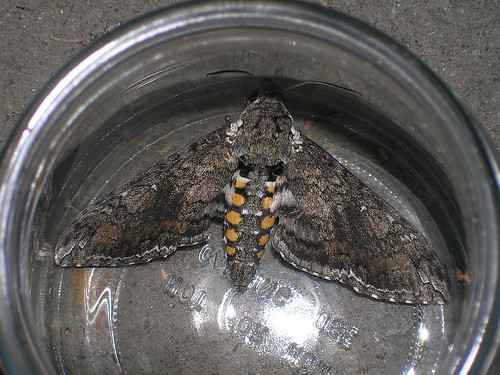tags: Carolina Sphinx Moth, Tobacco Hornworm Moth, Manducca sexta, Image of the Day
Manducca sexta, or the Carolina Sphinx Moth.
The larva, is known as the tobacco hornworm, or tomato worm. It has seven diagonal white lines on each side, and a red "horn" at the end of the abdomen. It feeds on plants in the nightshade family, and is known for its voracious appetite which can decimate a small tomato garden in no time! This one was first spotted on the window screen on the 2nd floor porch of my house. After I photographed it,
it was released unharmed. Although I have seen many tomato hornworms in my life, I have never seen an adult moth before. Very impressive in both size and coloration.
Image: Katie [larger].
More like this
I LOVE THIS MEETING!
We've all seen articles detailing remote controling insects via electric pulse systems on their nervous centers.
A week ago, I wrote:
The world is full of beautiful and strange things. Indonesian insects with eyes on stalks, African mole rats, Amazonian parrots and Chinese snakehead fish.


Will it also decimate Deadly Nightshade? If it does, I want lots and lots.
Clapping
Chardyspal
I recall the first time I saw a sphinx moth hovering to place its long proboscis into the corolla of a Nicotiana flower. It looked very much like a small hummingbird.